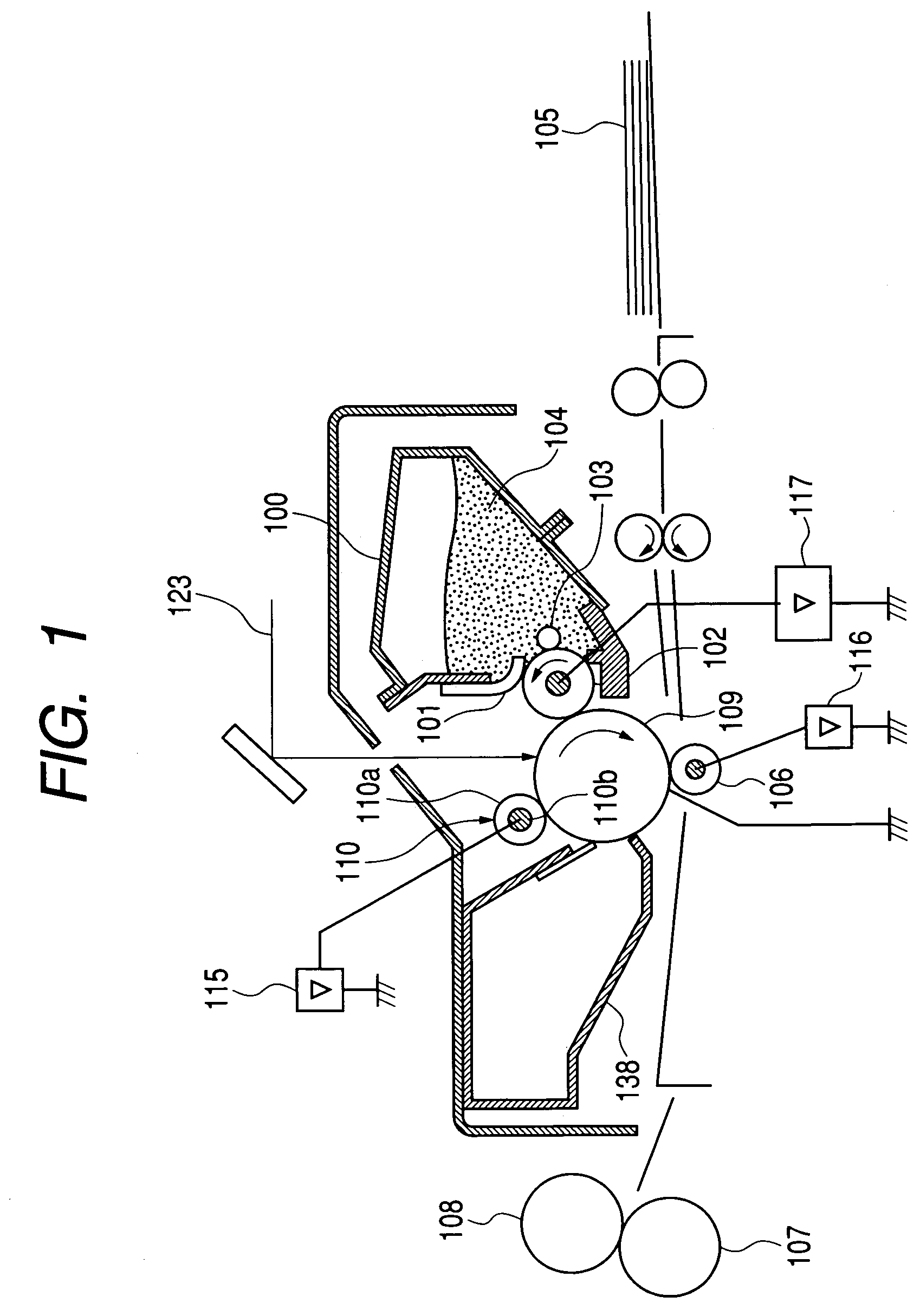Non-magnetic toner
a non-magnetic toner and toner technology, applied in the field of toner, can solve the problems of uneven surface of toner particles, low releasability of toner from the drum, and limited production process of toner, and achieve high transfer performance, good developing performance, and high image quality.
- Summary
- Abstract
- Description
- Claims
- Application Information
AI Technical Summary
Benefits of technology
Problems solved by technology
Method used
Image
Examples
example 1
[0312]First, a polymerization toner was produced by the following procedure. To 900 parts of ion-exchanged water heated to 60° C., 3 parts of tricalcium phosphate was added, followed by stirring at 10,000 rpm by means of a TK-type homomixer (manufactured by Tokushu Kika Kogyo Co., Ltd.) to prepare an aqueous medium.
[0313]The following polymerization monomer composition was also introduced into a TK-type homomixer (manufactured by Tokushu Kika Kogyo Co., Ltd.), and then heated to 60° C., followed by stirring at 9,000 rpm to effect dispersion and dissolution.
[0314]
Styrene 160 partsn-Butyl acrylate 40 partsC.I. Pigment Blue 15:3 14 partsPolar Polymer 1 1.5 partsPolyester resin (a polycondensation product of 10 partspropylene oxide modified bisphenol A and isophthalicacid; Tg: 65° C.; Mw: 10,000; Mn: 6,000)Stearyl stearate wax (DSC main peak: 60° C.) 30 partsDivinylbenzene 0.5 partDi-t-butyl ether0.04 part
[0315]In the mixture formed, 5 parts of a polymerization initiator 2,2′-azobis...
example 2
[0362]Toner (2) was produced in the same manner as in Example 1 except that the di-t-butyl ether was not added and 8 parts of t-butyl peroxypivarate (PERBUTYL PV, available from Nippon Oil & Fats Co., Ltd.) was used as the polymerization initiator. In this Example, 350 ppm of di-t-butyl ether was found to have been formed upon the reaction during polymerization. This compound was determined by mass spectrometry.
[0363]Physical properties of Toner (2) are shown in Table 1, and the results of evaluation made in the same manner as in Example 1 in Table 2.
example 3
[0364]Toner (3) was produced in the same manner as in Example 1 except that the ether compound to be added was changed for isobutyl-t-butyl ether.
[0365]In regard to Toner (3), the content of the ether compound according to the present invention was measured by gas chromatography to find that in Toner (3) the isobutyl-t-butyl ether was in a content of 150 ppm. Physical properties of Toner (3) are shown in Table 1, and the results of evaluation made in the same manner as in Example 1 in Table 2.
PUM
 Login to View More
Login to View More Abstract
Description
Claims
Application Information
 Login to View More
Login to View More - R&D
- Intellectual Property
- Life Sciences
- Materials
- Tech Scout
- Unparalleled Data Quality
- Higher Quality Content
- 60% Fewer Hallucinations
Browse by: Latest US Patents, China's latest patents, Technical Efficacy Thesaurus, Application Domain, Technology Topic, Popular Technical Reports.
© 2025 PatSnap. All rights reserved.Legal|Privacy policy|Modern Slavery Act Transparency Statement|Sitemap|About US| Contact US: help@patsnap.com



